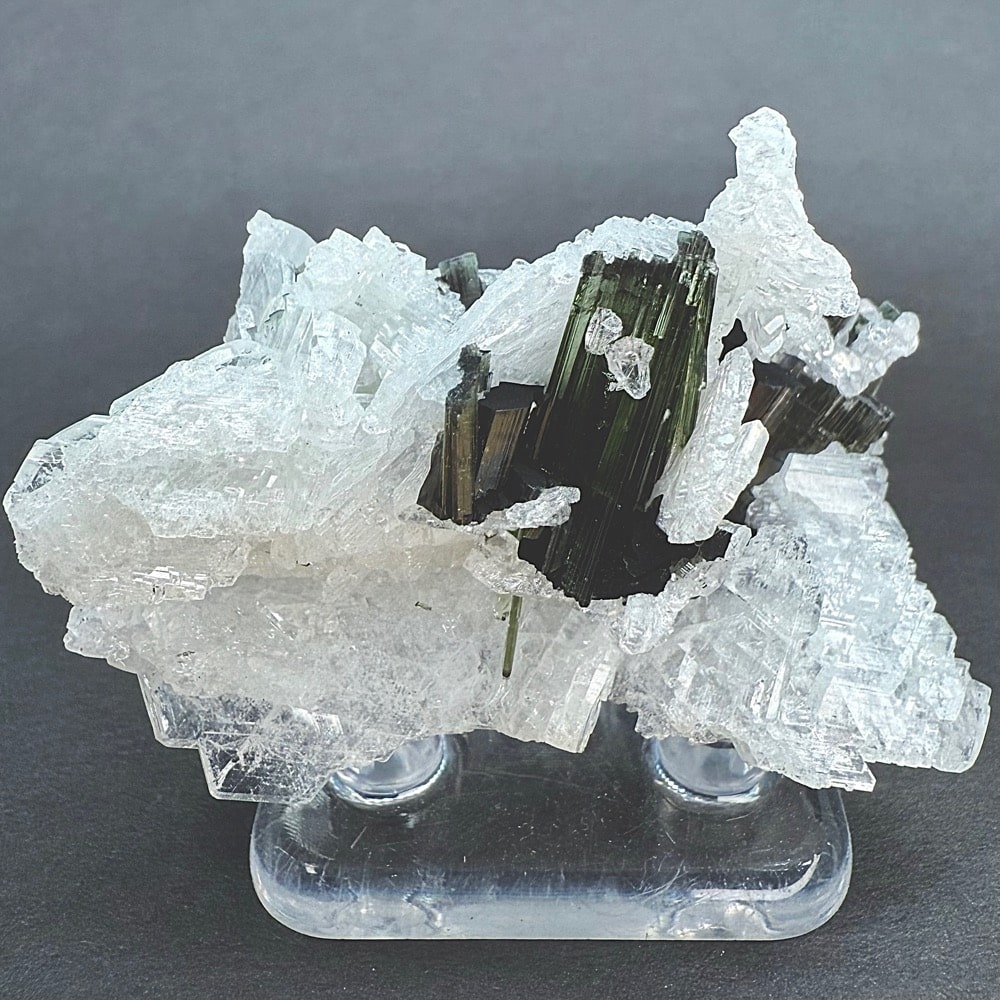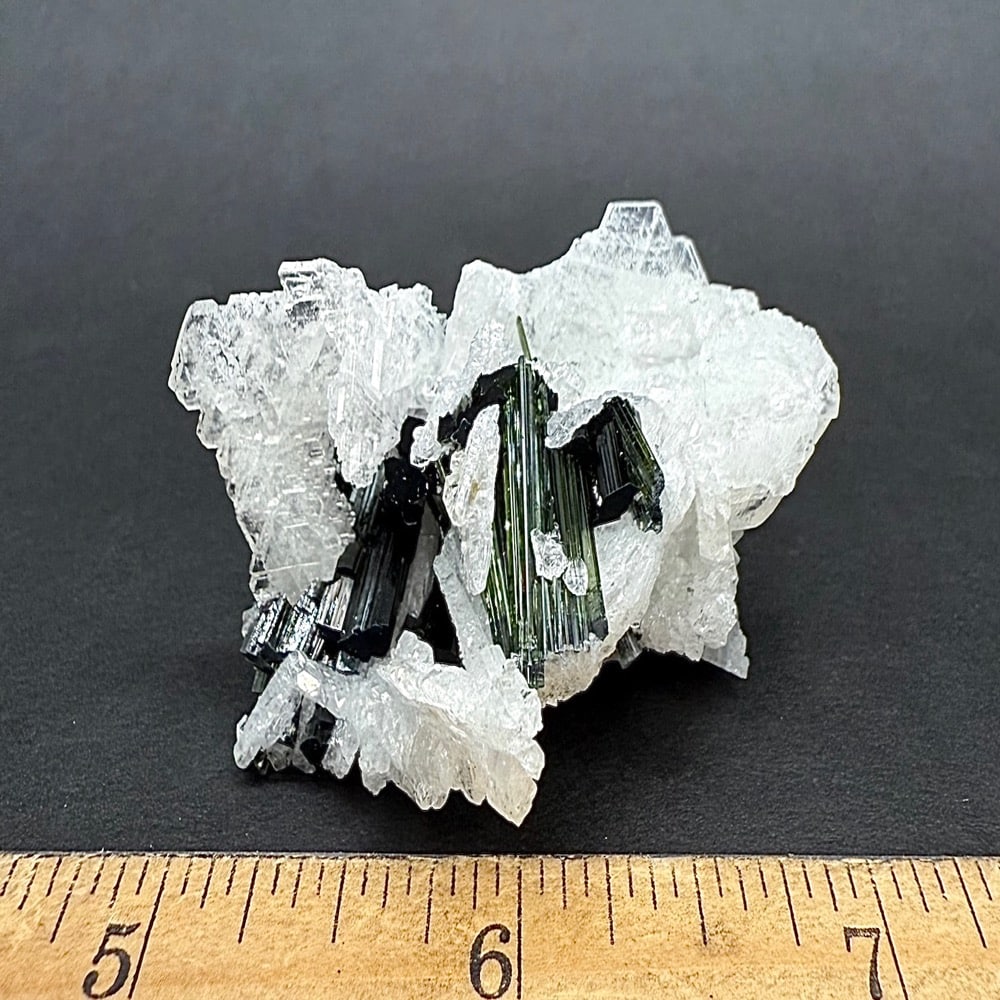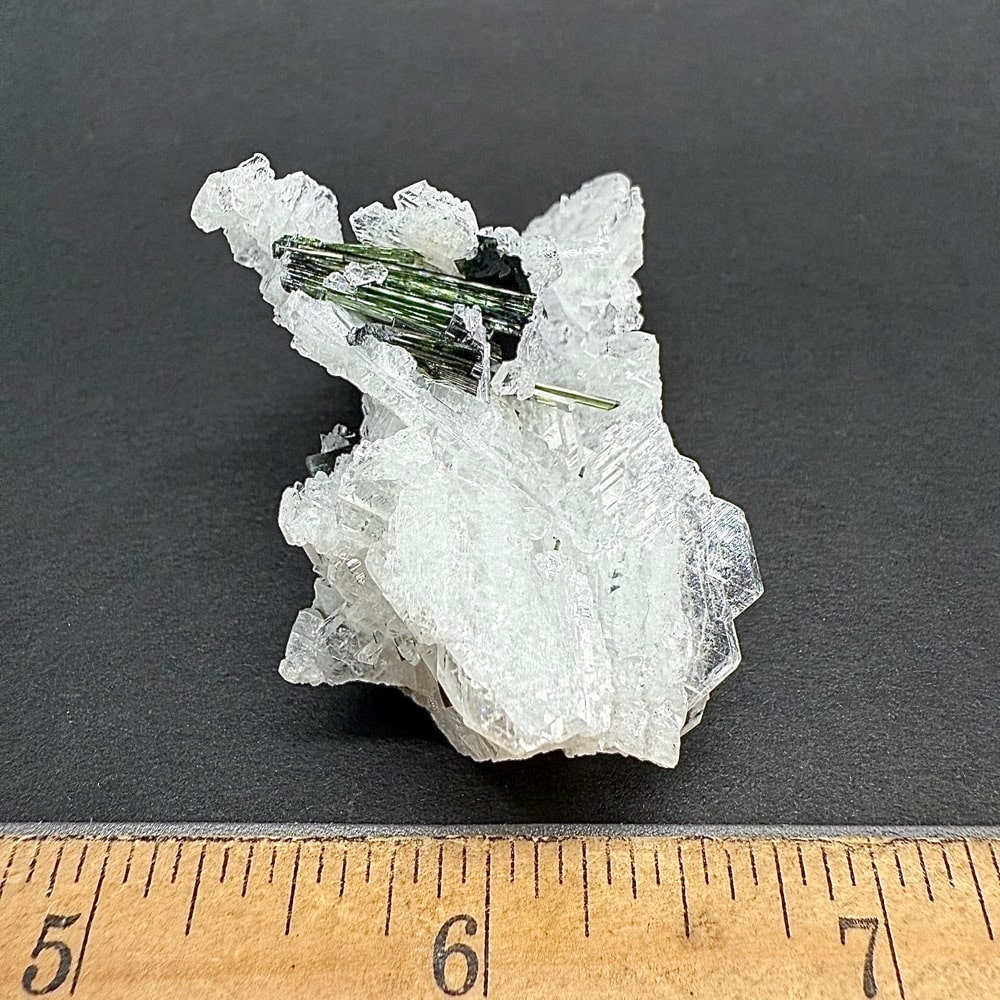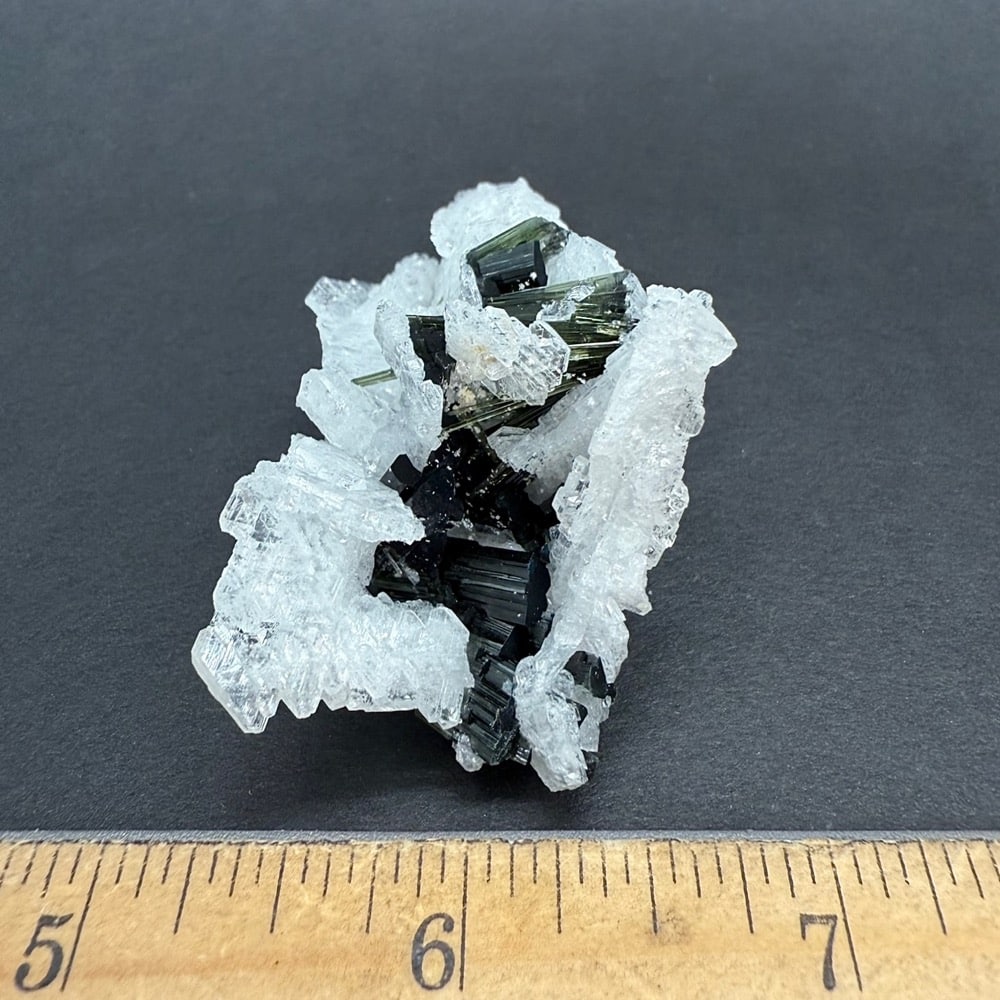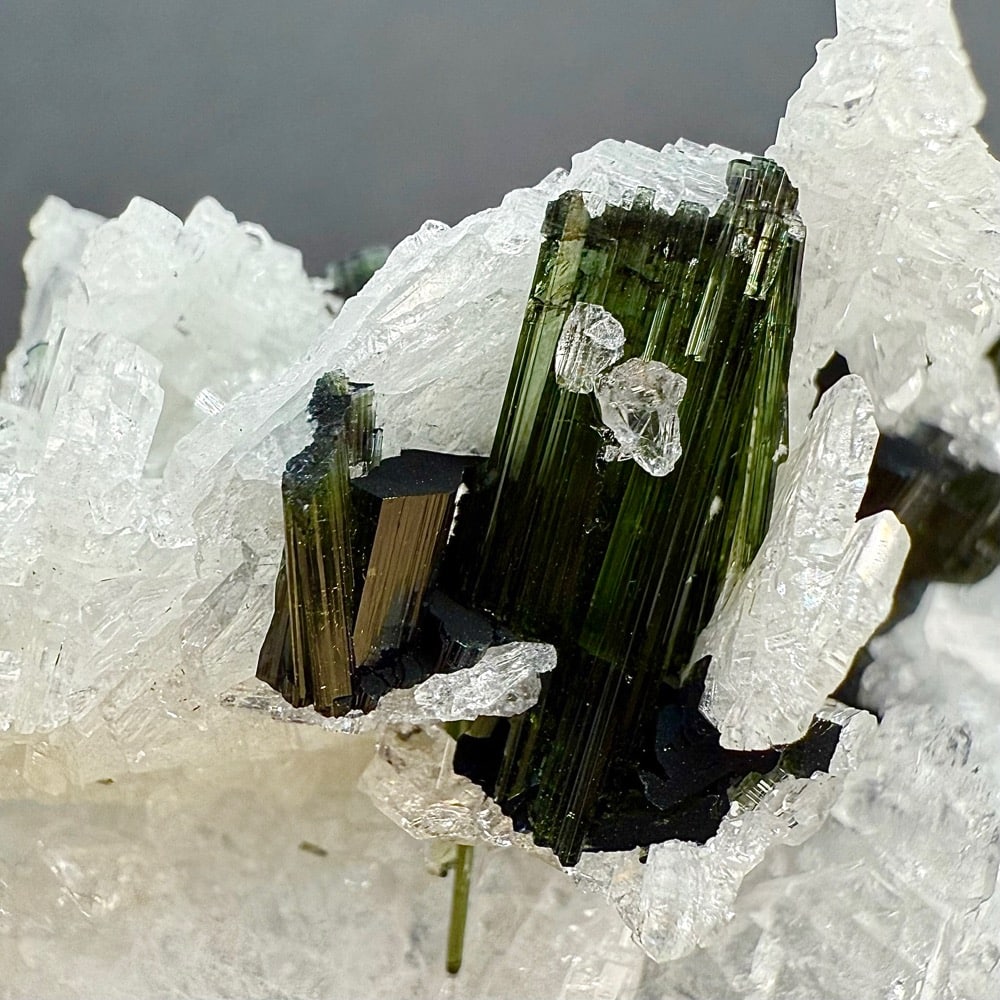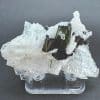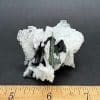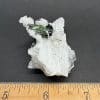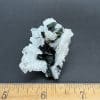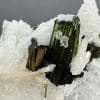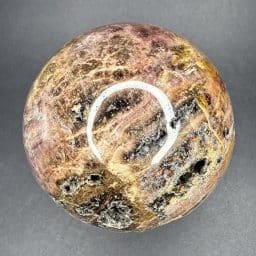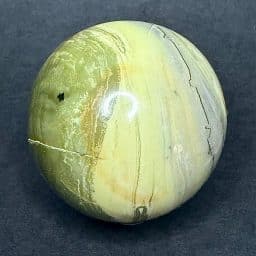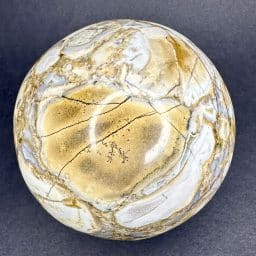Description
The Tourmaline mineral group is chemically one of the most complicated groups of Silicate minerals. Its composition varies widely with Sodium, Calcium, Iron, Magnesium, Lithium, Aluminum, Boron and other elements. It has a wide variety of colors including black, blue-black, brown, yellow, red, green, pink and is rarely colorless. This mineral is found in igneous rocks, like Granite Pegmatite, and metamorphic rocks such as Schist and Marble.
Cleavelandite is a variety of the mineral albite, one of the constituent minerals of plagioclase feldspar, thus is found in areas where pegmatites and granites exists in certain localities around the world as with albite, cleavelandite also exhibits a triclinic crystal habit and has a hardness of 6- 7 on the Moh’s scale of hardness, it is usually found within cavities of other rocks or minerals. It was named in 1823 by Henry J. Brooke in honor of Parker Cleaveland, professor of geology and mineralogy at Bowdoin College in Maine.
